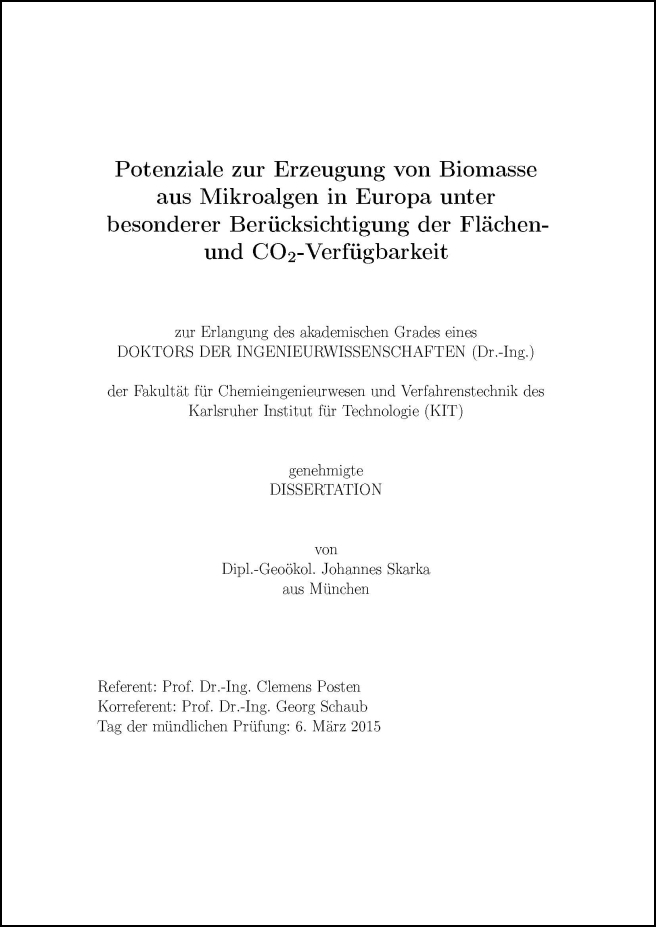PhD thesis on biomass from algae
Microalgae are seen as a promising option for the sustainable production of biofuels and animal feed in the future. Their advantages: They show high biomass productivity, can use CO2 from flue gases and can be cultivated on areas that are unsuitable for agriculture. But how much of the oil- or protein-rich microalgal biomass could be produced in Europe and could the advantages of microalgae over other energy crops be realized in practice? How important is the availability of suitable areas and CO2 for the economic viability of microalgae plants?
Johannes Skarka investigated these research questions in his dissertation "Biomass potential from microalgae in Europe with particular regard to the availability of land and CO2" at the Faculty of Chemical Engineering and Process Engineering of the Karlsruhe Institute of Technology (KIT). To address the raised questions he developed a model based on a geographic information system that was fed with high resolution spatial data on climate, land use, topography, protected areas and sources of CO2-emissions.
Skarka showed that the highest potential at lowest costs was located in Spain. However, also more northern regions could show low costs and high potentials for microalgae cultivation. The economics essentially depended on the site area, the CO2 costs, and the algal biomass yield – three parameters that differ strongly on the regional scale. The work points out the technical and economic parameters that have to be optimized to achieve high potentials and low costs and therefore contributes to a more sustainable production of microalgae in the future. (02.09.2015)
Publication
Skarka, Johannes
Potenziale zur Erzeugung von Biomasse aus Mikroalgen in Europa unter besonderer Berücksichtigung der Flächen- und CO2-Verfügbarkeit. Karlsruhe: KIT, 2015
PDF-Version for download


